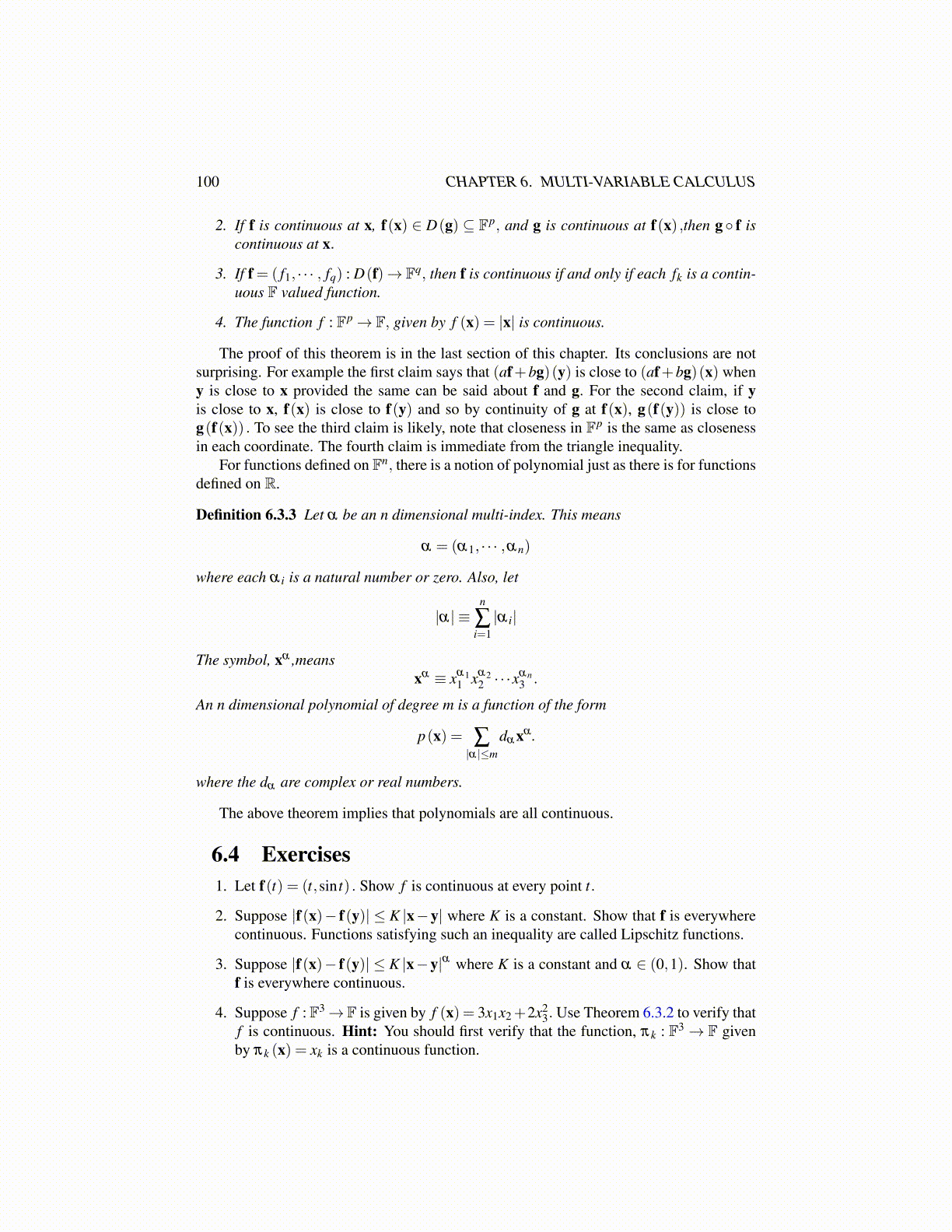
100 CHAPTER 6. MULTI-VARIABLE CALCULUS
2. If f is continuous at x, f(x) ∈ D(g) ⊆ Fp, and g is continuous at f(x) ,then g ◦ f iscontinuous at x.
3. If f = ( f1, · · · , fq) : D(f)→ Fq, then f is continuous if and only if each fk is a contin-uous F valued function.
4. The function f : Fp→ F, given by f (x) = |x| is continuous.
The proof of this theorem is in the last section of this chapter. Its conclusions are notsurprising. For example the first claim says that (af+bg)(y) is close to (af+bg)(x) wheny is close to x provided the same can be said about f and g. For the second claim, if yis close to x, f(x) is close to f(y) and so by continuity of g at f(x), g(f(y)) is close tog(f(x)) . To see the third claim is likely, note that closeness in Fp is the same as closenessin each coordinate. The fourth claim is immediate from the triangle inequality.
For functions defined on Fn, there is a notion of polynomial just as there is for functionsdefined on R.
Definition 6.3.3 Let α be an n dimensional multi-index. This means
α = (α1, · · · ,αn)
where each α i is a natural number or zero. Also, let
|α| ≡n
∑i=1|α i|
The symbol, xα ,meansxα ≡ xα1
1 xα22 · · ·x
αn3 .
An n dimensional polynomial of degree m is a function of the form
p(x) = ∑|α|≤m
dα xα.
where the dα are complex or real numbers.
The above theorem implies that polynomials are all continuous.
6.4 Exercises1. Let f(t) = (t,sin t) . Show f is continuous at every point t.
2. Suppose |f(x)− f(y)| ≤ K |x−y| where K is a constant. Show that f is everywherecontinuous. Functions satisfying such an inequality are called Lipschitz functions.
3. Suppose |f(x)− f(y)| ≤ K |x−y|α where K is a constant and α ∈ (0,1). Show thatf is everywhere continuous.
4. Suppose f : F3→ F is given by f (x) = 3x1x2+2x23. Use Theorem 6.3.2 to verify that
f is continuous. Hint: You should first verify that the function, πk : F3 → F givenby πk (x) = xk is a continuous function.